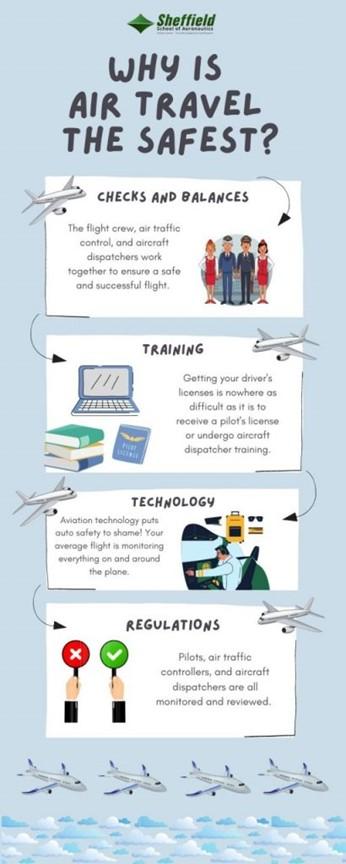Max, a spirited golden retriever, trembled in the corner as thunder rumbled outside. His owner, Sarah, knew she had to act fast. She gently wrapped him in a snug blanket, creating a safe cocoon. With soothing music playing softly in the background, she offered him his favorite chew toy. Gradually, Max’s breathing slowed, and his tail began to wag. By understanding his needs and providing a calming environment, Sarah transformed his anxiety into comfort. Remember, a stressed dog can find peace with the right approach—your love and attention can make all the difference.
Contents
- Understanding the Signs of Stress in Dogs
- Creating a Calm Environment for Your Dog
- Effective Techniques for Reducing Canine Anxiety
- The Role of Professional Help in Managing Dog Stress
- Q&A
Understanding the Signs of Stress in Dogs
Recognizing when your dog is stressed is crucial for their well-being. Dogs, much like humans, exhibit a range of behaviors that can indicate they are feeling overwhelmed or anxious. Some common signs to watch for include:
- Excessive barking or whining: This vocalization can be a cry for help or a way to express discomfort.
- Changes in body language: A stressed dog may exhibit a lowered head, tucked tail, or flattened ears.
- Avoidance behaviors: If your dog is suddenly hiding or trying to escape, it’s a clear signal that they are feeling uneasy.
- Destructive actions: Chewing on furniture or digging can be a way for dogs to cope with their stress.
Physical symptoms can also provide insight into your dog’s emotional state. Pay attention to changes in their appetite, energy levels, or grooming habits. A stressed dog might refuse to eat or show lethargy, while others may over-groom or develop skin issues due to anxiety. Additionally, watch for signs of excessive panting or drooling, which can indicate heightened stress levels. These physical manifestations are not just behavioral; they can lead to serious health issues if not addressed promptly.
Environmental factors often contribute to a dog’s stress. Loud noises, unfamiliar surroundings, or changes in routine can trigger anxiety in even the most laid-back pets. It’s essential to create a calm and safe environment for your dog, especially during times of change. Consider using calming aids such as pheromone diffusers or anxiety wraps, which can help soothe your dog and create a sense of security in their surroundings.
understanding your dog’s unique personality and triggers is key to managing their stress effectively. Some dogs may thrive in social settings, while others may prefer solitude. Observing their reactions to different situations will help you identify what causes them stress and how to mitigate it. By being proactive and attentive to their needs, you can foster a more relaxed and happy environment for your furry friend.
Creating a Calm Environment for Your Dog
Creating a serene atmosphere for your dog is essential in alleviating stress and promoting a sense of security. Dogs are highly sensitive to their surroundings, and a chaotic environment can exacerbate anxiety. To foster tranquility, consider implementing the following strategies:
- Designate a Safe Space: Set up a cozy corner in your home where your dog can retreat when feeling overwhelmed. This area should be equipped with their favorite blanket, toys, and perhaps a piece of your clothing to provide comfort.
- Control Noise Levels: Minimize loud sounds that can startle your dog. Use soft music or white noise machines to create a calming auditory backdrop that can help mask sudden noises from outside.
- Maintain a Consistent Routine: Dogs thrive on predictability. Establishing a daily schedule for feeding, walks, and playtime can help your dog feel more secure and reduce anxiety.
- Incorporate Calming Scents: Utilize dog-safe essential oils, such as lavender or chamomile, to create a soothing atmosphere. Diffusing these scents can promote relaxation and help ease your dog’s stress.
Lighting also plays a crucial role in setting the mood. Soft, natural light can create a warm and inviting environment. Avoid harsh, bright lights that may cause discomfort. Consider using lamps with dimmers or blackout curtains to control the brightness in your dog’s space. This gentle lighting can help your dog feel more at ease and less exposed to potential stressors.
Additionally, the arrangement of furniture and decor can impact your dog’s comfort level. Ensure that their safe space is free from clutter and distractions. A tidy environment not only reduces anxiety but also allows your dog to navigate their surroundings with confidence. Incorporate elements that promote relaxation, such as soft rugs or low furniture that encourages a sense of security.
remember that your energy influences your dog’s state of mind. Approach your dog with calmness and reassurance. Engage in gentle interactions, such as petting or soft-spoken words, to reinforce a peaceful atmosphere. Your demeanor can significantly affect how your dog perceives their environment, making it vital to embody the tranquility you wish to instill.
Effective Techniques for Reducing Canine Anxiety
Understanding your dog’s triggers is crucial in addressing their anxiety. Observe their behavior in various situations to identify what causes stress. Common triggers include loud noises, unfamiliar environments, or separation from their owners. Once you pinpoint these stressors, you can work on desensitizing your dog gradually. This involves exposing them to the trigger in a controlled manner, rewarding calm behavior, and slowly increasing exposure over time.
Creating a safe and comforting environment can significantly alleviate anxiety. Designate a quiet space in your home where your dog can retreat when feeling overwhelmed. This area should be equipped with their favorite blanket, toys, and perhaps a piece of your clothing to provide a sense of security. Additionally, consider using calming aids such as **anxiety wraps**, **calming pheromone diffusers**, or **soft music** designed to soothe pets. These tools can help create a tranquil atmosphere that encourages relaxation.
Regular exercise and mental stimulation are vital in managing canine anxiety. Engaging your dog in daily physical activities, such as walks, playtime, or agility training, can help release pent-up energy and reduce stress levels. Incorporating puzzle toys or interactive games can also provide mental challenges that keep their minds occupied. A tired dog is often a calmer dog, so ensure they receive adequate exercise tailored to their age and breed.
Lastly, consider professional help if your dog’s anxiety persists despite your efforts. Consulting with a veterinarian or a certified animal behaviorist can provide insights into more advanced techniques or medications that may be necessary. They can help develop a customized plan that addresses your dog’s specific needs, ensuring a comprehensive approach to their well-being. Remember, patience and consistency are key in helping your furry friend overcome anxiety.
The Role of Professional Help in Managing Dog Stress
When it comes to alleviating stress in dogs, seeking professional help can be a game-changer. Veterinarians and certified animal behaviorists possess the expertise to identify underlying issues that may contribute to your dog’s anxiety. They can conduct thorough assessments and provide tailored recommendations, ensuring that your approach to calming your furry friend is both effective and safe. By consulting with professionals, you gain access to a wealth of knowledge that can help you understand your dog’s unique needs.
In many cases, stress in dogs can stem from medical conditions or pain that owners may not readily recognize. A veterinarian can rule out any health issues that could be exacerbating your dog’s stress levels. Once any medical concerns are addressed, they can also suggest appropriate treatments, such as medications or supplements, that can help ease anxiety. This holistic approach ensures that both the physical and emotional well-being of your dog is prioritized.
Professional trainers and behaviorists can also play a crucial role in managing dog stress. They can provide guidance on effective training techniques that promote positive behavior and reduce anxiety triggers. Techniques such as desensitization and counter-conditioning can be particularly beneficial in helping dogs adjust to stressful situations. By working with a professional, you can learn how to create a structured environment that fosters security and confidence in your dog.
Additionally, professionals can offer valuable resources and support for pet owners. They can help you develop a comprehensive stress management plan that includes lifestyle changes, environmental adjustments, and enrichment activities tailored to your dog’s specific needs. By collaborating with experts, you not only enhance your dog’s quality of life but also empower yourself with the tools and knowledge necessary to create a calm and nurturing environment.
Q&A
-
What are the signs that my dog is stressed?
Common signs of a stressed dog include:
- Excessive barking or whining
- Destructive behavior
- Excessive panting or drooling
- Hiding or seeking solitude
- Changes in appetite or sleep patterns
-
How can I create a calming environment for my dog?
To create a calming environment, consider the following:
- Provide a quiet, comfortable space for your dog to retreat to.
- Use calming scents, such as lavender or chamomile, to soothe your dog.
- Maintain a consistent routine to help your dog feel secure.
- Limit exposure to loud noises and chaotic environments.
-
What techniques can I use to calm my stressed dog?
Effective techniques include:
- Engaging in gentle play or exercise to release pent-up energy.
- Practicing obedience training to reinforce positive behavior.
- Using calming products, such as anxiety wraps or pheromone diffusers.
- Incorporating relaxation techniques, like massage or gentle brushing.
-
When should I seek professional help for my dog’s stress?
If your dog’s stress is severe or persistent, consider seeking professional help when:
- Your dog exhibits aggressive behavior.
- Home remedies and techniques do not improve the situation.
- Your dog’s health is affected, such as weight loss or excessive lethargy.
- You feel overwhelmed and unsure of how to proceed.
calming a stressed dog requires patience, understanding, and the right techniques. By implementing these strategies, you can create a serene environment that fosters your dog’s well-being. Invest in their peace of mind today for a happier, healthier companion tomorrow.

大家好,我是彼得潘,專業的手法身體治療師。我喜歡探索和研究各種主題,並透過與人工智慧的合作分享專業、實用、有趣的文章。我們定期進行人工審核,以確保內容的準確性。如果您發現文章中有任何不準確的地方,請隨時與我們聯繫,我們會及時糾正。您可以透過 [email protected] 與我們聯繫。



